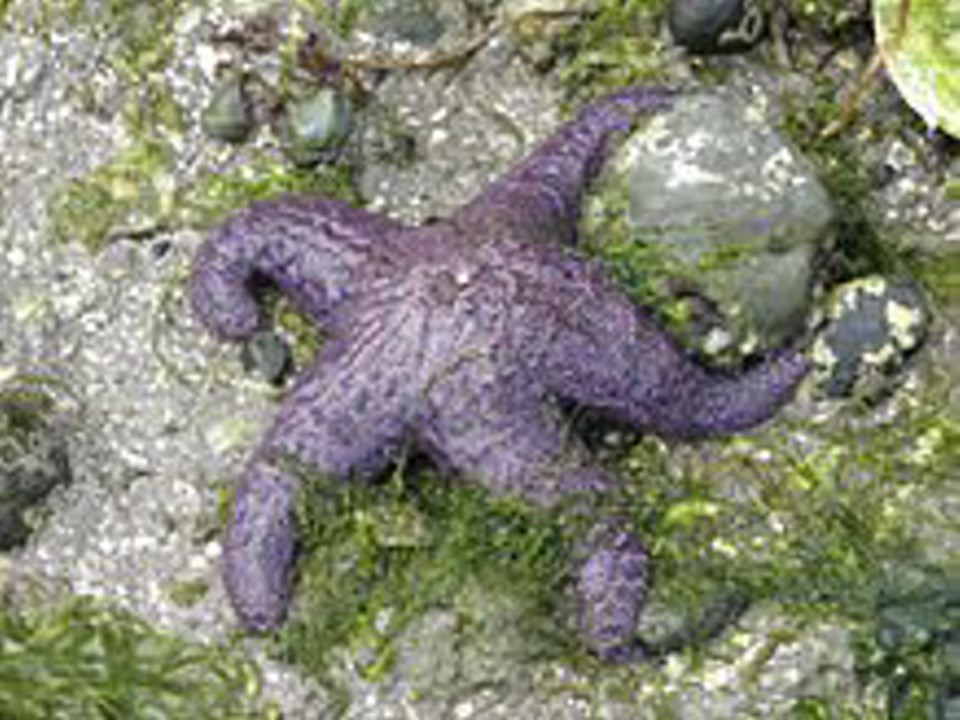Purple ochre sea stars are facing extinction in Oregon due to the same mysterious disease seen around Vancouver Island last summer, says a report from Oregon State University.
The report says sea star wasting syndrome has exploded in the past two weeks on the Oregon coast — which until recently had been spared — and is threatening the state’s entire population of purple ochre sea stars.
The disease — which causes sea stars, commonly known as starfish, to lose legs and disintegrate — was first noticed last summer near Vancouver and Seattle and spread to many intertidal areas around Vancouver Island. The Shaw Ocean Discovery Centre in Sidney has been monitoring it. California has also been affected, as have states on the East Coast, from New Jersey to Maine.
Purple ochre sea stars aren’t the only species affected by the disease — from here to Alaska, it’s the sun star that is dying off — but they appear to be the most heavily affected in the intertidal zone, according to OSU researchers. Sea stars are a “keystone” predator, keeping shellfish populations under control, and their loss could affect the entire marine intertidal ecosystem, they say.
The OSU report says this is the first time that die-offs of sea stars have been identified at one time along such a wide expanse of the West Coast.
OSU researcher Bruce Menge describes the die-off as “an unprecedented event. We’ve never seen anything of this magnitude before.”
In B.C., the loss to local starfish populations is well below 50 per cent, said Jessica Schultz of the Vancouver Aquarium, but “it’s certainly possible things will get worse.”
The syndrome may reappear locally as the ocean temperatures rise over the summer, said Schultz, the aquarium’s research co-ordinator for the Howe Sound.
“It seems to be coming back in different species this time, [but] I’m not expecting to see an extinction,” she said, noting that colonies can be repopulated from larvae drifting in from other areas.
The cause of die-off remains a mystery, but scientists have said they have narrowed it to a pathogen that’s either bacterial or viral.



